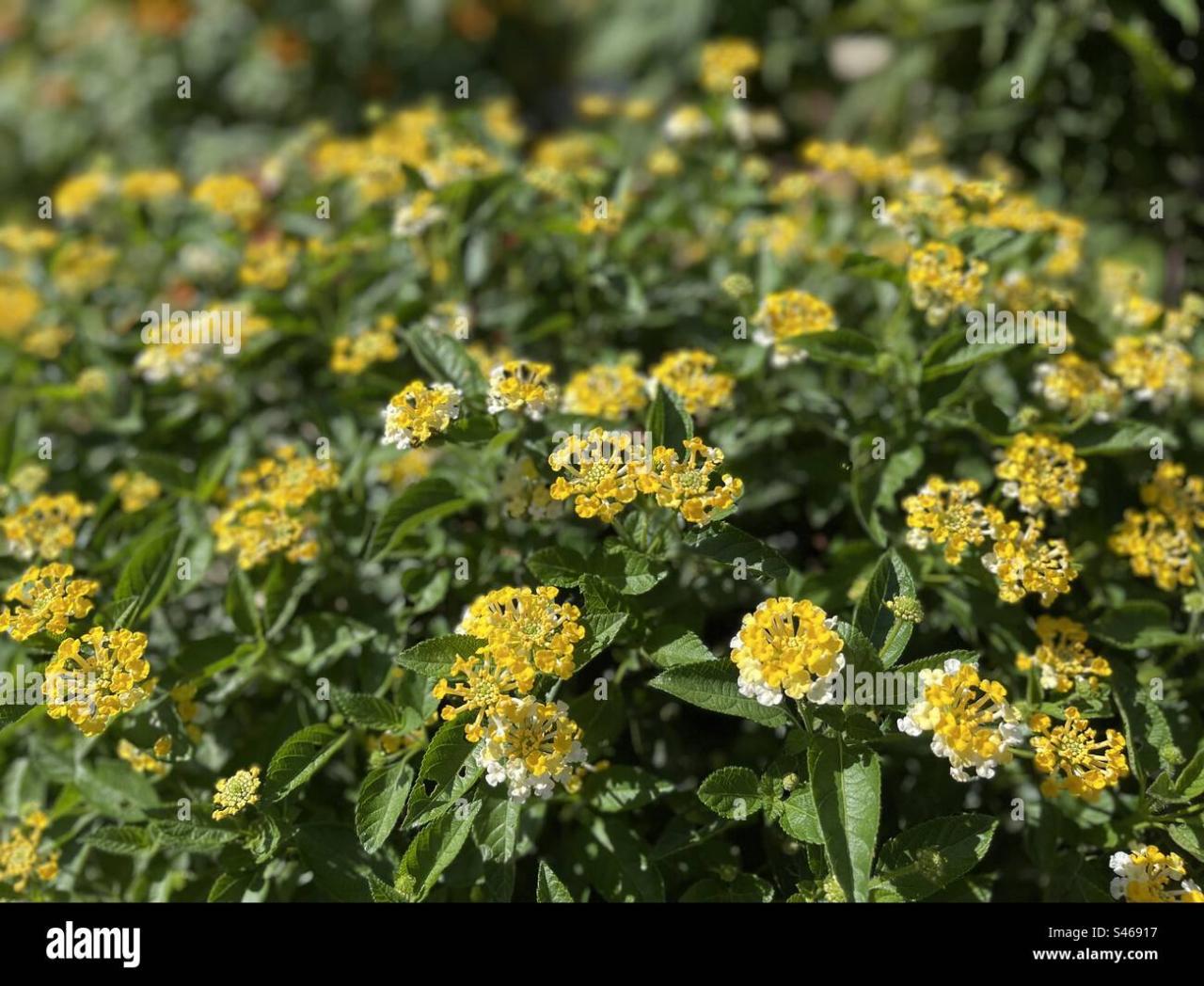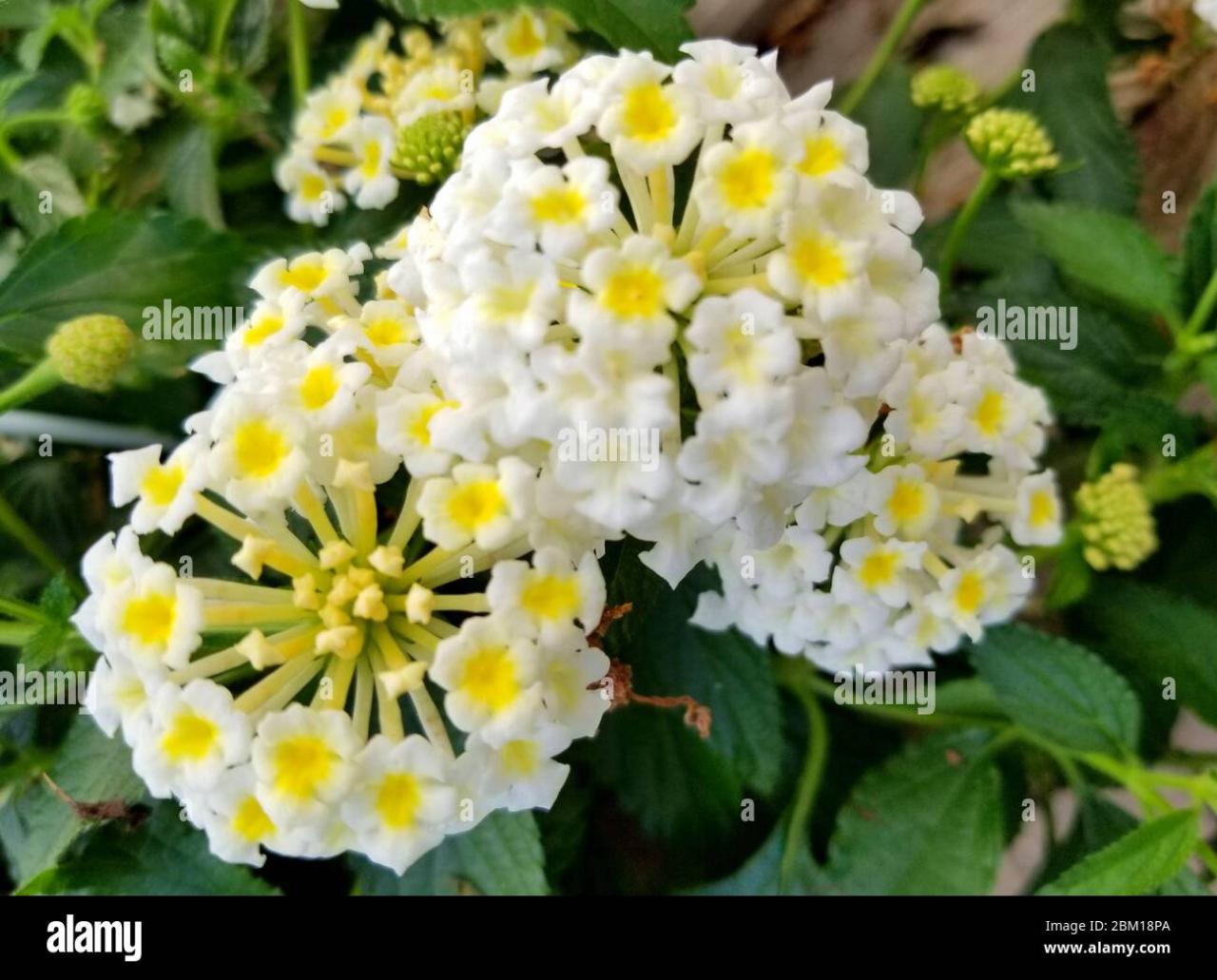Yellow and White Lantana is a stunning flowering plant that has gained popularity among gardeners and landscapers due to its vibrant colors and hardy nature. This article delves into the beauty, care, and features of Yellow and White Lantana, providing you with comprehensive information to cultivate these delightful plants in your garden.
What is Yellow and White Lantana?

Yellow and White Lantana, scientifically known as Lantana camara, is a member of the Verbenaceae family. This versatile perennial shrub is cherished for its clusters of brightly colored flowers, which typically bloom in shades of yellow and white, creating a captivating display that can brighten any garden.
Lantana is native to the tropical regions of America, and it has now become widespread in other parts of the world due to its adaptability and ornamental qualities. The flowers are not only visually appealing but also attract butterflies and other pollinators, making them an excellent choice for biodiversity in gardens.
Characteristics of Yellow and White Lantana
One of the distinguishing features of Yellow and White Lantana is its beautiful flower clusters. Here are some key characteristics:
| Feature | Description |
|---|---|
| Flower Color | Bright yellow and white clusters |
| Size | Can grow between 1 to 3 feet tall |
| Foliage | Dark green, rough-textured leaves |
| Blooming Season | Spring to fall, with occasional blooms in winter |
| Light Requirements | Prefers full sun but tolerates partial shade |
> Note: The flowers of Lantana are often fragrant and can vary in color from one cluster to another, providing a unique aesthetic to each plant.
Growing Yellow and White Lantana
Growing Yellow and White Lantana is relatively easy, making it a favorite for both novice and experienced gardeners. Follow these essential steps to ensure successful growth:
Choosing the Right Location
Selecting the right location is crucial for the optimal growth of Yellow and White Lantana. These plants thrive in full sun, requiring at least 6 hours of direct sunlight each day. However, they can also tolerate partial shade.
Soil Requirements
Yellow and White Lantana prefers well-drained soil, as they are susceptible to root rot in overly wet conditions. A sandy or loamy soil type enriched with organic matter works best. Aim for a soil pH level between 6.0 and 7.0 for ideal growth.
Planting Yellow and White Lantana
When planting Yellow and White Lantana, consider the following:
1. Spacing: Allow at least 2 to 3 feet of space between each plant to promote airflow and prevent disease.2. Depth: Plant the seedlings or cuttings at the same depth they were previously growing in their pots.3. Watering: Water the plants thoroughly after planting, ensuring the soil is evenly moist but not saturated.> Important Note: If you are planting in colder regions, it’s best to start Lantana indoors or wait until the last frost date has passed.
Watering and Fertilization
Yellow and White Lantana is drought-tolerant once established, but they benefit from regular watering during dry spells. Water the plants deeply but infrequently to encourage deep root growth.
Fertilization is usually not necessary, as Lantana can thrive in poorer soils. However, an occasional application of a balanced fertilizer during the growing season can promote more vibrant blooms.
Pruning Yellow and White Lantana
Pruning is an essential part of caring for Yellow and White Lantana. Proper pruning helps maintain a bushy appearance and encourages healthy growth. Here’s how to prune:
When to Prune
The best time to prune Yellow and White Lantana is in early spring, just before new growth begins. This timing helps to remove any dead or damaged wood and encourages the plant to produce new flowers.
How to Prune
Follow these steps for effective pruning:
1. Use Clean Tools: Always use clean, sharp tools to avoid transmitting disease.2. Cut Back: Trim the stems back by one-third to one-half of their height. Focus on removing any dead or crossing branches.3. Shape the Plant: Aim for an even, rounded shape, promoting even blooming across the plant.> Tip: Deadheading spent blooms throughout the growing season can also encourage the plant to produce more flowers.
Pests and Diseases of Yellow and White Lantana
While Yellow and White Lantana is generally resistant to pests and diseases, some issues may arise. Being aware of potential threats can help you take action promptly:
Common Pests
| Pest | Symptoms | Treatment |
|---|---|---|
| Aphids | Sticky residue, distorted leaves | Insecticidal soap or neem oil |
| Spider mites | Fine webbing, yellowing leaves | Increase humidity and use miticides |
| Whiteflies | White, flying insects on the undersides of leaves | Sticky traps and insecticidal soap |
Diseases
Yellow and White Lantana can be affected by a few diseases, primarily due to overwatering or poor air circulation. The most common diseases include:
– Powdery Mildew: A fungal disease that appears as white spots on the leaves. Ensure good air circulation and avoid overhead watering to mitigate this issue.- Root Rot: Often caused by overwatering, root rot can kill the plant. Ensure well-draining soil and avoid waterlogging.> Important Note: If you notice signs of disease or pest infestation, act quickly to prevent further damage to your Lantana plants.
Benefits of Yellow and White Lantana

In addition to their beauty, Yellow and White Lantana offer several benefits that make them an excellent choice for any garden:
Attracts Pollinators
The vibrant colors and nectar-rich flowers of Lantana attract butterflies, bees, and hummingbirds, which can significantly enhance the biodiversity of your garden. 🌼
Low Maintenance
Once established, Yellow and White Lantana require minimal maintenance. Their drought tolerance and resistance to pests make them an excellent option for busy gardeners or those new to gardening.
Versatility in Landscaping
Yellow and White Lantana can be used in various landscaping designs, including borders, mass plantings, or as ground cover. They can also thrive in containers, adding a pop of color to patios and balconies. 🌻
Seasonal Interest
With their long blooming season, Yellow and White Lantana can provide color to your garden from spring until the first frost, ensuring that your outdoor space remains vibrant year-round.
Uses of Yellow and White Lantana in Gardens
Integrating Yellow and White Lantana into your garden design can enhance both beauty and function:
Garden Borders and Edging
Yellow and White Lantana can create a stunning border or edging for pathways and flower beds. Their lush growth and colorful blooms create an inviting atmosphere for any garden space.
Butterfly Gardens
Incorporating Lantana into butterfly gardens can attract various species, providing a haven for these pollinators. Pairing them with other nectar-rich plants will create a diverse and attractive landscape.
Container Gardening
These plants are ideal for container gardening due to their manageable size and beautiful blooms. Lantana can thrive in pots on decks, patios, or balconies, adding vibrant color and charm to any outdoor setting. 🌈
Conclusion
Yellow and White Lantana is a versatile and stunning addition to any garden. With their vibrant blooms, low maintenance requirements, and ability to attract pollinators, they not only enhance the beauty of your outdoor space but also contribute to local biodiversity. By following the proper care techniques Artikeld in this article, you can enjoy a flourishing display of Yellow and White Lantana for many seasons to come. Embrace the joy of gardening and bring a touch of sunshine into your landscape with these delightful plants!
